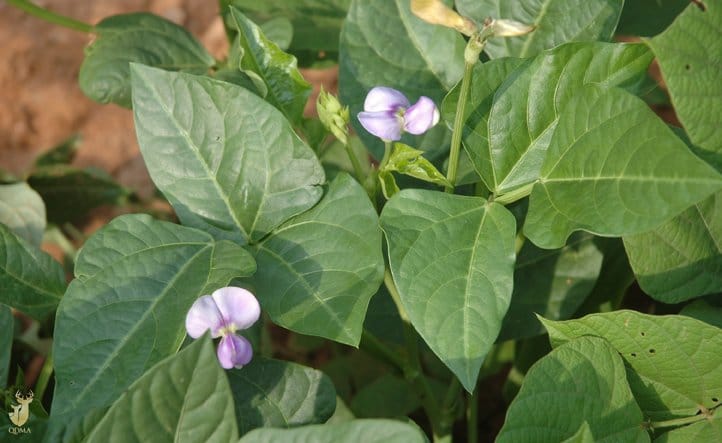
For a fast-germinating summer food plot or early bow-season hotspot, try planting some cowpeas. Cowpeas, Vigna unguiculata, are a warm-season annual that can be grown throughout the United States. Often called iron-and-clay pea or black eye pea, this legume crop produces highly digestible large triangular leaves on viney, stemmed growth that is very attractive to deer. Perhaps the hardest part of planting cowpeas is to keep the deer from devouring them before they put on any substantial growth – a problem common to other warm-season legumes including soybeans and lablab.
Cowpeas can be planted in most of the country from May to August. Later plantings can provide succulent growth to attract deer for an early bow shot. Cowpeas can tolerate a wide range of soil types but do best when planted in well-drained soils that are slightly acidic. In most cases, cowpeas have enough drought resistance to establish without supplemental irrigation. Seeds can be drilled at a rate of 30 to 50 lbs./acre or broadcast at a rate of 50 to 75 lbs./acre. Broadcast seeds should then be lightly disked or dragged to bury them to a depth of about one inch deep. I have successfully planted cowpeas without inoculating them; however, inoculation will increase crop productivity and success. “Inoculation” provides the crop with the appropriate soil bacteria, which allows the legume to create its own nitrogen supply. Apply a balanced fertilizer at planting time, such as 250 pounds of 13-13-13 or 200 pounds of 19-19-19 per acre. No additional fertilizer should be required after this.
As I mentioned earlier, one of the biggest challenges of planting cowpeas is to try and get them established and able to tolerate browsing before the deer discover them. The two ways to accomplish this are either to plant plots no less than one acre in size or to use some type of repellent or fencing to protect the young seedlings for thirty to fifty days until they begin to mature. Every time I have tried to sneak a small bowhunting food plot of cowpeas into one of my honey hole stand sites, I was left with nothing but stems sticking out of the ground after an overnight deer invasion because I did not protect them.
When it comes to variety selection for cowpeas, you will need to check with your local farm supply to see what is available. Common selections may include Iron-and-Clay, Thorsby Cream, and Catjang. Cowpeas can also be mixed with other crops to help protect them from early overgrazing. Combinations can include mixing with other summer annuals, like grain sorghum and/or buckwheat, or cool-season forage grasses depending on what time of the year you plant. In the extended Food Plot Species Profile in Quality Whitetails magazine, I will go into more detail on what combinations of seeds to try and other management practices for successfully growing cowpeas.






![Air gun 101: The differences between .177 & .22 – Which jobs they do best ? [Infographic]](https://airgunmaniac.com/wp-content/uploads/2020/09/g44-218x150.jpg)



































